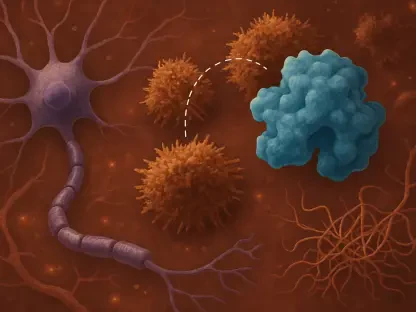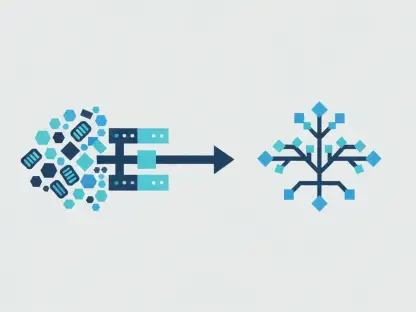Alzheimer’s disease, a debilitating condition marked by progressive memory loss and cognitive decline, has long proven resistant to effective treatment, leaving millions of patients and their families searching for hope. Despite significant research efforts, traditional therapies targeting the amyloid hypothesis have yielded limited success, prompting researchers to explore alternative avenues. One of the most promising of these is gene therapy, which offers the potential to modify genetic predispositions and deliver neuroprotective agents directly to the brain, providing a new and innovative approach to combating this devastating disease.
The Promise of Gene Therapy in Alzheimer’s Treatment
Gene therapy represents a revolutionary approach to Alzheimer’s treatment, showing immense potential in targeting the genetic underpinnings of the disease. By altering or replacing specific genes within the brain, researchers aim to modify the course of Alzheimer’s, offering long-lasting benefits for patients. Unlike traditional therapies, which primarily focus on symptom management, gene therapy seeks to address the root causes of the disease, ultimately halting or even reversing its progression.
One of the key advantages of gene therapy is its ability to target multiple pathological mechanisms beyond just amyloid plaques, which have been a primary focus in conventional approaches. This multipronged strategy holds great promise for tackling the disease from various angles, providing a more comprehensive and effective treatment. As research progresses, scientists continue to refine delivery techniques and work to ensure the long-term safety and efficacy of these innovative therapies. The collective efforts underscore the potential of gene therapy to revolutionize Alzheimer’s disease management, offering a beacon of hope for patients and their families.
Ronald Crystal’s Innovative Approach
At the forefront of gene therapy research for Alzheimer’s disease is Ronald Crystal, a renowned pulmonary doctor and gene therapy researcher at Weill Cornell Medicine. Crystal’s groundbreaking work centers on the apolipoprotein E (APOE) gene, which is crucial for lipid transport within the brain and exists in three alleles: APOE2, APOE3, and APOE4. Unfortunately, individuals who possess the APOE4 allele face a significantly higher risk of developing Alzheimer’s, with two copies of the allele raising the risk to 60% by age 85.
Crystal’s innovative strategy involves delivering the protective APOE2 gene to high-risk individuals using adeno-associated virus (AAV) serotype R#0. This delivery method aims to ensure the permanent expression of the APOE2 protein in the cerebrospinal fluid (CSF), potentially mitigating the risk associated with the APOE4 allele. Early-stage clinical trials by Lexeo Therapeutics, built upon Crystal’s research, have demonstrated encouraging results. Patients treated with this approach expressed the APOE2 protein in their CSF, exhibited reduced levels of tau protein—an Alzheimer’s biomarker—and experienced no significant adverse events, suggesting a promising therapeutic effect.
Exploring Additional Gene Therapy Variations
Lexeo Therapeutics continues to advance gene therapy research by exploring various approaches to provide a broad spectrum of treatment options. One promising approach involves suppressing the expression of the APOE4 allele using microRNAs, which may reduce the harmful effects associated with this allele. By targeting the suppression of APOE4, researchers hope to diminish its contribution to Alzheimer’s pathology and potentially slow down the progression of the disease in high-risk individuals.
Another innovative strategy under investigation incorporates the Christchurch variant, a particular allele variant known for its protective effect against Alzheimer’s in individuals with the APOE3 allele. This approach aims to harness the natural protective properties of the Christchurch variant, offering a unique therapeutic avenue for patients carrying the APOE3 allele. By tailoring therapies to individual genetic profiles, researchers seek to maximize therapeutic benefits while minimizing potential risks, ultimately advancing the goal of personalized medicine in Alzheimer’s treatment.
Mark Tuszynski’s Groundbreaking Efforts
Mark Tuszynski, a prominent researcher at the University of California, San Diego (UCSD), is pioneering another innovative approach to gene therapy for Alzheimer’s disease. Tuszynski’s research focuses on delivering brain-derived neurotrophic factor (BDNF), a protein that promotes neuronal health and connectivity. By enhancing BDNF levels in the brain, this strategy aims to rebuild and maintain neuronal circuits that are damaged by Alzheimer’s disease, offering a potential therapeutic means to counteract cognitive decline.
Tuszynski and his team employ state-of-the-art MRI-guided technology to deliver BDNF directly to specific brain regions, such as the entorhinal cortex and hippocampus, which are critically affected in Alzheimer’s patients. Early data from clinical trials indicate promising metabolic stability and positive changes in treated brain areas, signifying potential therapeutic benefits. However, more extensive studies are necessary to confirm the long-term efficacy and safety of this approach, as researchers remain committed to advancing these trials to their next phases.
Challenges and Future Directions
Alzheimer’s disease is a debilitating condition characterized by progressive memory loss and cognitive decline. For years, it has defied effective treatment, leaving millions of patients and their families desperately seeking hope. Despite extensive research efforts, traditional therapies aimed at addressing the amyloid hypothesis have seen limited success. This failure has driven researchers to explore alternative approaches.
One of the most promising alternatives is gene therapy. This innovative method has the potential to modify genetic predispositions, offering a new avenue for treatment. Gene therapy works by delivering neuroprotective agents directly to the brain, potentially halting or even reversing the cognitive decline associated with Alzheimer’s. Unlike traditional treatments that largely focus on managing symptoms, gene therapy targets the underlying genetic factors contributing to the disease.
This approach represents a groundbreaking shift in the battle against Alzheimer’s. By addressing the root causes at the genetic level, it’s possible to provide more effective and long-lasting interventions. Researchers are hopeful that with continued advancements, gene therapy could significantly improve the prognosis for those affected by this devastating condition. The pursuit of gene therapy marks a beacon of hope for millions awaiting a breakthrough in the fight against Alzheimer’s disease.









